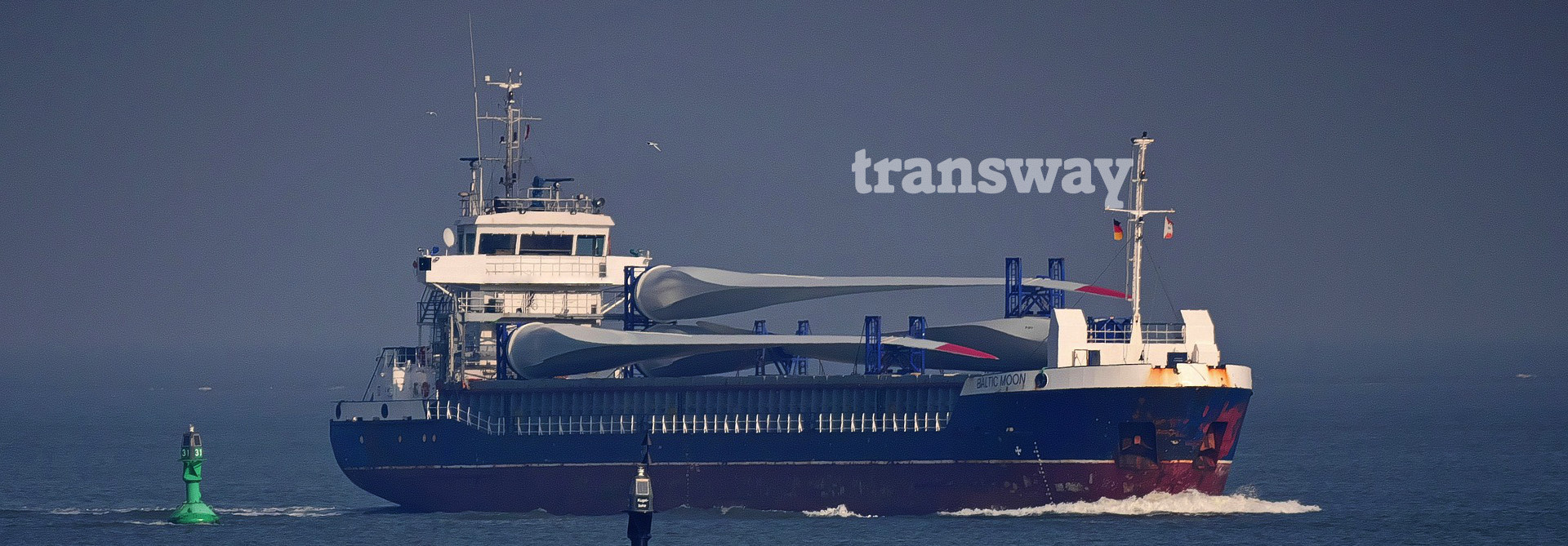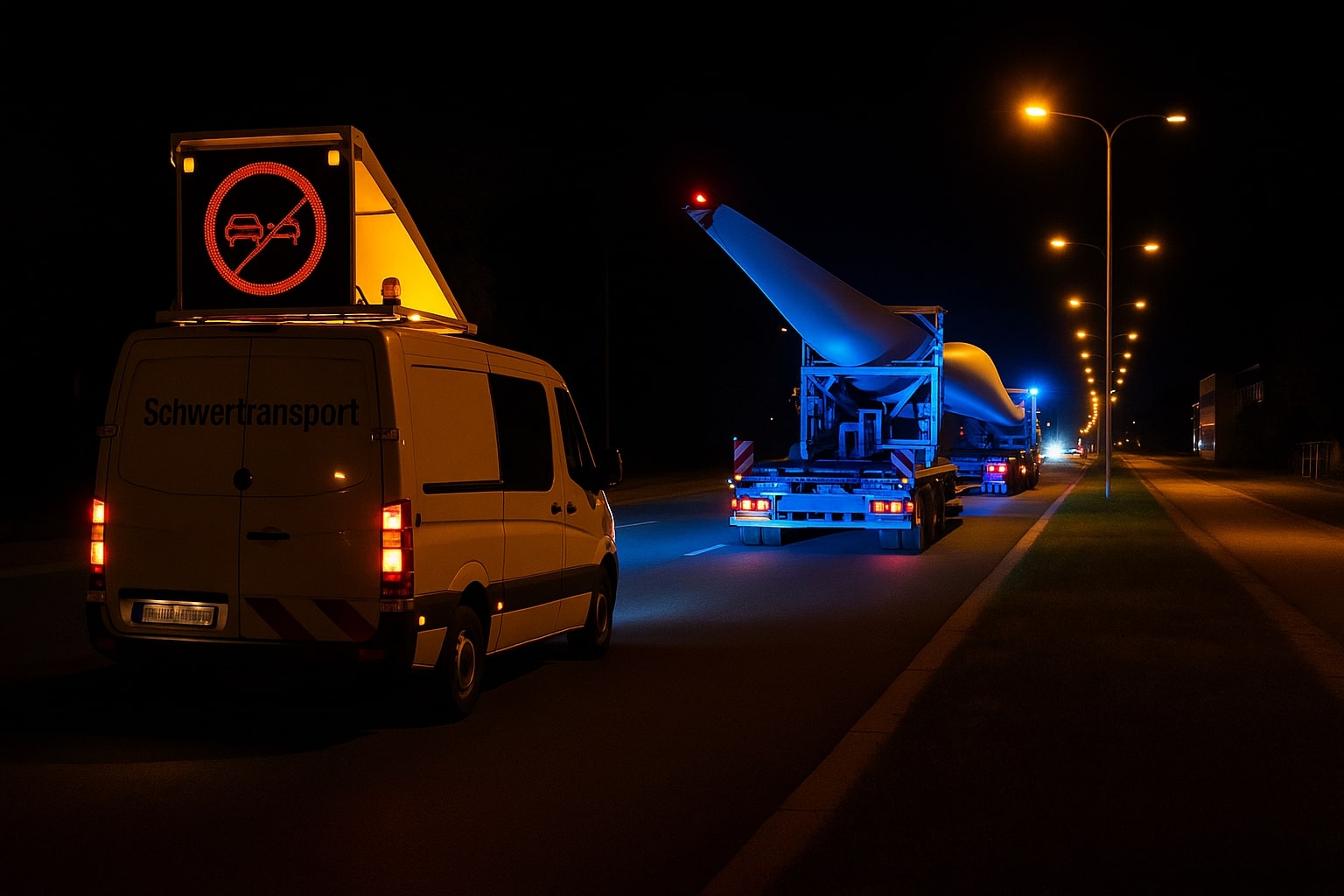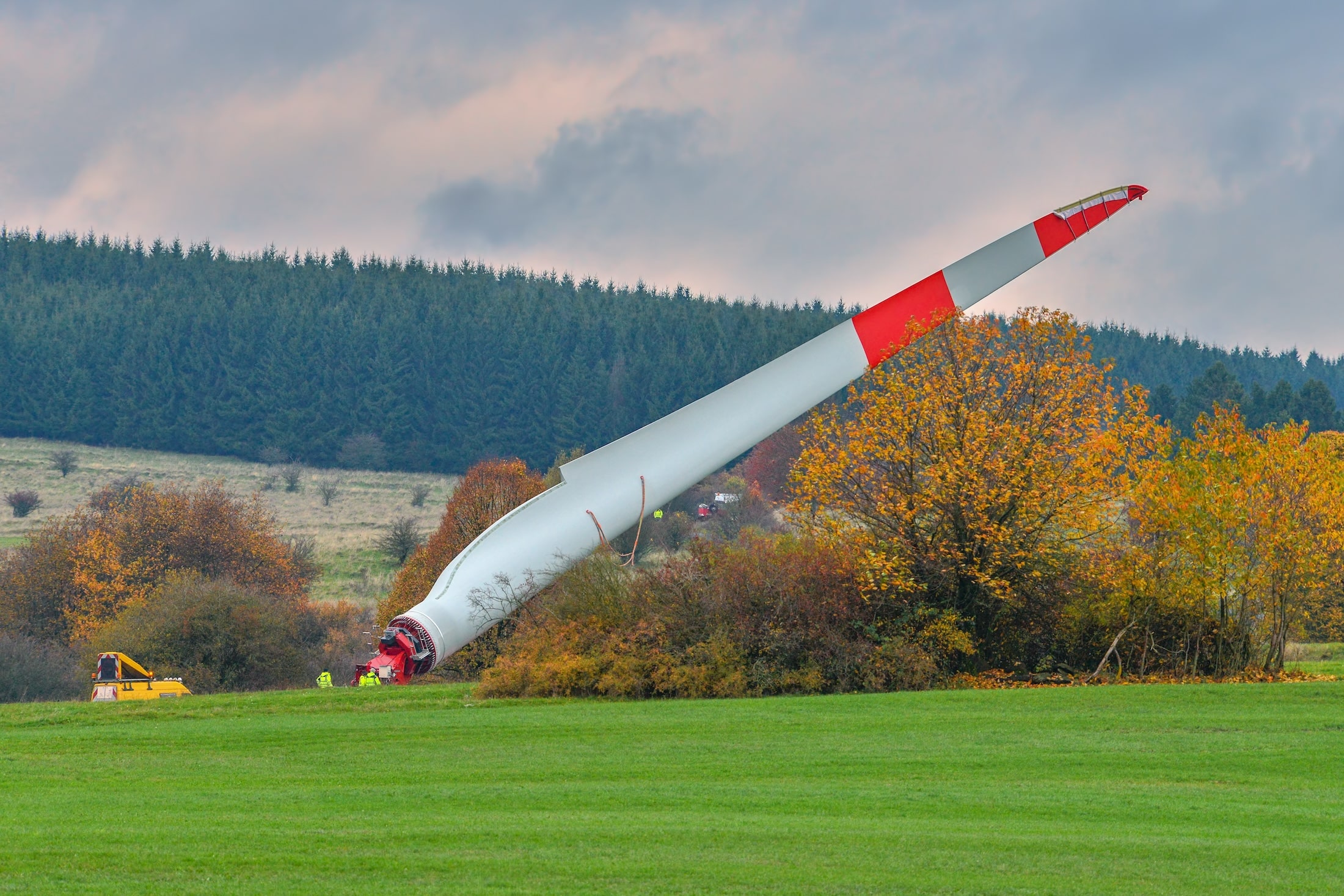Find experienced companies for heavy haulage and wind energy logistics – from rotor blade transport to complete wind turbines.



When individual parts of wind turbines are transported – whether during assembly or dismantling – the standards shift, and significantly. What is considered large in classic, everyday logistics seems tiny here. One example: the rotor blade. Around 60 meters in length are standard today, but in modern systems the blades reach up to 90 meters – and they weigh several dozen tons .
The other components are also far from normal. The lowest tower segment often weighs 50 to 70 tons, the entire steel tower over 200 tons. And where the three rotor blades will later connect is the hub – a solid cast component weighing around 20 tonnes, significantly higher in the case of the largest turbines. When such components have to be moved, every detail, no matter how small, counts. It goes without saying that this is a task for experts in the field of transport and logistics of wind turbines .
In addition, such dimensions and weights are also anything but normal on our roads. That's why every route has to be checked and approved in advance – from curve radii to bridge loads to clearance heights. Many transports also take place at night, when roads are empty and escort vehicles secure the route. In narrow towns, signs are dismantled, intersections are closed for a short time, access roads are coordinated.

The drivers then steer their heavy-duty transporters with millimetre precision. They receive instructions by radio from support teams who keep an eye on every movement. After all, even a small steering angle determines whether, for example, an 80-metre-long rotor blade can safely pass lanterns, house walls, trees or embankments.
Wind turbine transports therefore require experience, precision and well-rehearsed processes between freight forwarders, authorities, police and energy companies. And this shows what wind energy logistics is all about: technology, planning and responsibility are intertwined so that every component arrives undamaged where it is needed. Behind this precision is an enormous planning effort.
However, the dimension is not only reflected in the size of the components, the total volume also speaks a clear language:
In Germany alone, tens of thousands of heavy transports are carried out every year for the expansion of wind energy – for rotor blades, tower segments and machine parts. According to estimates by the Association Initiative for Large-Capacity and Heavy Transports (VI GST), up to 60,000 transports per year will be required in the future for the planned expansion of onshore wind energy, as can be seen from the current position paper of the VI GST.
Before the wind turbine transport: planning, approval and route testing
Wind energy transport in many ways: road, rail, waterway
The challenge of rotor blade transport
The safety factor in rotor blade transport
How much does it cost to transport wind turbines?
Conclusion: Wind energy transports need experts and expert knowledge
Every transport usually begins many weeks in advance before the first heavy-duty transporters start rolling – at the desk. This is because wind turbine logistics, i.e. the transport of individual components such as rotor blades, tower segments and hubs, are subject to strict technical and legal requirements. Every heavy transport must be applied for, checked and approved.
Applications for transport are submitted digitally via the nationwide VEMAGS system. There, freight forwarders, road traffic authorities, police and infrastructure operators coordinate. The basis is the guidelines of the StVZO and the RGST 2013, which determine how heavy-duty transport for wind turbines is to be applied for and secured.
First of all, the technical route planning is on the agenda. Before a heavy transport for wind energy components is released, the entire route is digitally checked – from curve radii to clearance heights to bridge loads. The planning is based on the largest component of the turbine, which is usually the rotor blade.
This is considered the benchmark for the route, while the other components are then tested and evaluated. On the basis of this data, route analyses and proof of load-bearing capacity are created. This so-called route study documents all critical points of the route – from bridge loads and axle loads to infrastructure to bottlenecks and curve radii – and forms the basis for the subsequent application for approval. Then it will be clarified whether conversions are necessary, such as the removal of traffic signs or the widening of access roads. After completion of the wind energy transport, the temporary adjustments are usually dismantled again.
In Germany, the procedures are complex. Each federal state has its own responsibilities, and transports across state borders require separate clearances. Municipalities and property owners must also be involved if necessary. For example, when driveways, field edges or private paths have to be driven on for a short time. Only when all conditions have been met does the authority issue permission for the transport of wind turbines.
After many weeks of preparation, coordination and coordination of timetables, escort vehicles and traffic corridors, the transports can finally set off. And this usually takes place in the low-traffic time windows - usually at night between 10 p.m. and 6 a.m. And so the actual transport of rotor blades, tower segments and other components is ultimately the visible part of a long, precisely coordinated preparatory work.
How slowly such a heavy transport progresses in practice surprises many. On average, the columns only move forward at walking pace – usually in the range of around six to seven kilometres per hour. Because the journeys are limited to a few hours at night and have to be stopped again and again to set barriers, check bottlenecks or clear intersections, there are often only a few kilometres per night of operation . On demanding routes, it can therefore take more than a week for a rotor blade to be brought from the transshipment site to the wind farm site.
⬆️ [ Back to Table of Contents]
Wind turbines are getting bigger and bigger. And with their size, the complexity of logistics also grows. Components with lengths of over 80 meters and weights well over 20 tons can often only be moved on the road with considerable effort. Last but not least, each part requires its own transport vehicle. For this reason, logistics planners are increasingly examining multimodal concepts in which different transport routes are combined .
In addition to roads, inland waterways and ports are coming into focus. They offer sufficient space for large-format components and help to relieve heavily congested road corridors. From there, heavy goods vehicles take over the last section of the route to the destination. Rail transport can also be an option in individual cases – for example for tower segments or smaller components. But the rails quickly reach their limits due to length and profile limits alone.

Waterways can also make some things easier when transporting wind energy ( © dedi | stock.adobe.com)
Nevertheless, such combined logistics solutions can have many advantages in wind energy transport: fewer bottlenecks on selected routes, better distribution of transports across several modes of transport and potential for reducing emissions.
However, the organizational effort remains high. Every transhipment, for example from the ship or train to the road, entails additional coordination, if necessary further permits, coordinated time windows and special equipment for securing the components.
In the long term, however, multimodal transport strategies make it possible to move large components more efficiently while protecting infrastructure and the environment. Although they are not yet a nationwide standard, they are increasingly seen as a useful addition to classic heavy-duty logistics – especially where conventional routes reach their limits. With the further expansion of wind energy and increasing turbine sizes, the importance of multimodal logistics chains is likely to increase further. Not least to relieve road infrastructure and approval procedures.
⬆️ [ Back to Table of Contents]
When transporting rotor blades, classic low-loaders quickly reach their limits. Blades with lengths of well over 70 meters need special vehicle technology to remain maneuverable at all. In practice, three designs are used: telescopic long goods trailers, trailers with rotor blade adapters and so-called blade lifters on modular chassis, so-called "self-propelled". What all special vehicles have in common: without hydraulic steering, lifting and swivel systems, they would hardly be able to transport today's generations of rotor blades.
For "straighter" sections of the road, telescopic trailers are often used. These wind turbine trailers can be extended several times and reach loading lengths of up to 60–65 metres, and in special versions even more, so that they can accommodate rotor blades of over 80 metres in length. Modern models work with pendulum axles, which enable both a large steering angle (sometimes up to 60 degrees) and a stroke of several hundred millimeters. For example, the bogies can compensate for uneven ground and the trailer can be steered through roundabouts, slight serpentines and construction site access roads despite its length.
Where curve radii, gradients or buildings become more critical, adapter systems are used. Here, the rotor blade is clamped at the blade root in an adapter mounted on a platform or module trailer. These adapters can hydraulically lift, tilt and rotate the blade on its own axis. Typical specifications: tilt angle up to about 60 degrees and a rotation of the blade by more than 100 degrees, often with a sliding counterweight for stabilization. This reduces the effective length of the transport combination in tight curves and allows the blade to be deliberately "rotated" past obstacles.

Despite their gigantic dimensions, rotor blades remain very maneuverable thanks to technologies like these – and can thus pass even the tightest places ( © photobars | stock.adobe.com)
Blade lifters are used for particularly demanding sections, such as steep mountain roads, narrow village thoroughfares or exposed locations. Technically, this is a combination of rotor blade adapter and self-propelled modular chassis (e.g. SPMT-like units). These systems carry the blade freely in the air, have hydraulic lifting cylinders and swivel bearings and, depending on the manufacturer and model, can erect the component by up to approx. 60 degrees and rotate it up to 360 degrees when driving.
Blade lifters are often controlled by radio remote control. Then an operator walks alongside and adjusts the position of the blade in real time. He actively avoids obstacles such as embankments, trees, houses, bridges or tunnelsby lifting the blade or turning it to the side. The freely selectable blade position also allows it to react to crosswinds: Some systems allow 360° rotation to change the blade's surface to the wind.
⬆️ [ Back to Table of Contents]
Enormous forces are at work not only during operation, but also during the transport of rotor blades. The reason for this is the dimensions and also the weight of a single sheet. In this combination, it can react sensitively to crosswinds and inclination. Even moderate gusts can shift the centre of gravity and create additional loads on trailers and fastening systems. For this reason, haulage companies and clients usually set their own limit values for wind, temperature and permissible inclinations in order to minimise the risks.
One of the critical points, for example, is the interface between the rotor blade and the adapter. It has to absorb all the forces that arise when lifting, tilting or turning. Fastening and locking are therefore checked and documented before each journey. During the journey itself, hydraulic systems ensure the necessary load balance: pendulum axles distribute the pressure evenly, compensate for uneven ground and keep the transport platform as horizontal as possible so that the blade remains stable in any situation.
The infrastructure is also being prepared for the extraordinary load. After all, roadsides, driveways and verges have to withstand axle loads of well over 100 tonnes . If necessary, roadsides are reinforced with steel plates or gravel layers so that the ground does not give way.
⬆️ [ Back to Table of Contents]
Transporting a wind turbine is a logistical masterpiece and at the same time very expensive. Even before the first heavy-duty transporter rolls off, planning, route testing and approval procedures begin. Each trip must be applied for individually, checked and coordinated with authorities, police and infrastructure operators. This preparatory work alone devours a lot of time and money.
However, how expensive a transport will be in the end depends on many details : on the length and weight of the components, on the route, the requirements along the route and on the number of districts or federal states affected. Structural adjustments are particularly expensive – when traffic lights have to be dismantled, verges reinforced with steel plates or access roads have to be temporarily widened. Waiting times due to weather or lack of approvals also drive up costs. Depending on the scope, the expenses for transporting a complete system are in the six- to seven-figure range.
A major cost factor is not on the road, but in the paper: the permits. Each heavy transport needs its own approval, and even small changes in weight or deadline lead to new procedures. The German Engineering Federation (VDMA) estimates the savings potential at up to 70 million euros per year if these processes were digitized and accelerated. By comparison, in the Netherlands, such transports are usually digitally approved within a few days – in Germany it often takes weeks or months.
This shows that the costs are mainly due to organization, coordination and waiting time. Experienced logistics companies know how to limit effort and costs – through forward-looking planning, precise route studies and close coordination with the authorities. If you keep track of everything, you not only save money, but also valuable time, and on top of that, you can ensure that every component arrives where it is needed on time.
⬆️ [ Back to Table of Contents]
When a rotor blade rolls through the night, accompanied by radio instructions and blue lights, it finally becomes apparent what wind energy logistics means: precision, experience and teamwork under conditions that know no routine. Each transport is a project in itself. With its own time window, its own route and its own rules.
Precisely because wind turbines are getting bigger and bigger, the responsibility of those who have to move them is also growing. It takes experienced companies, experts who understand the technology, know regulations and control processes with foresight. This is the only way to ensure that wind turbines arrive on time and unharmed at their destination, where movement becomes energy.
On wind-turbine.com you will find logistics companies that have exactly this experience – from the first metre of the route to the last journey to the wind farm.
